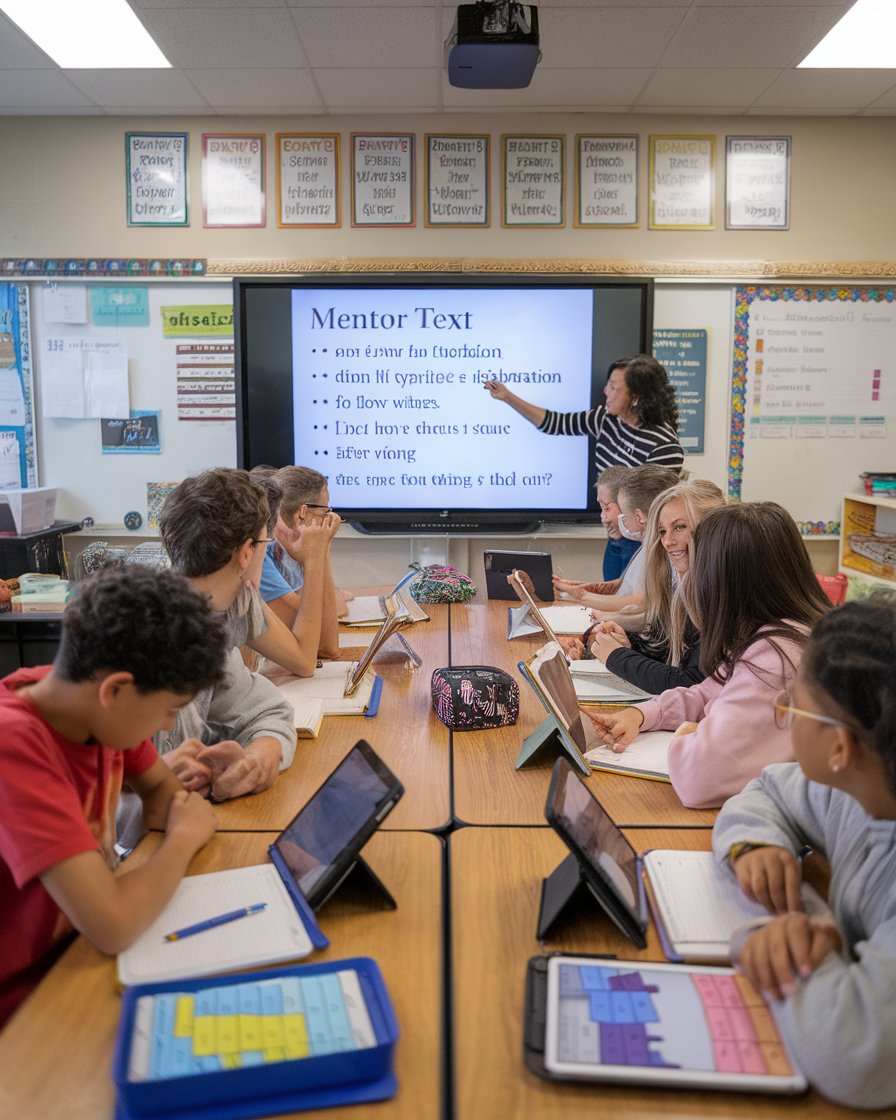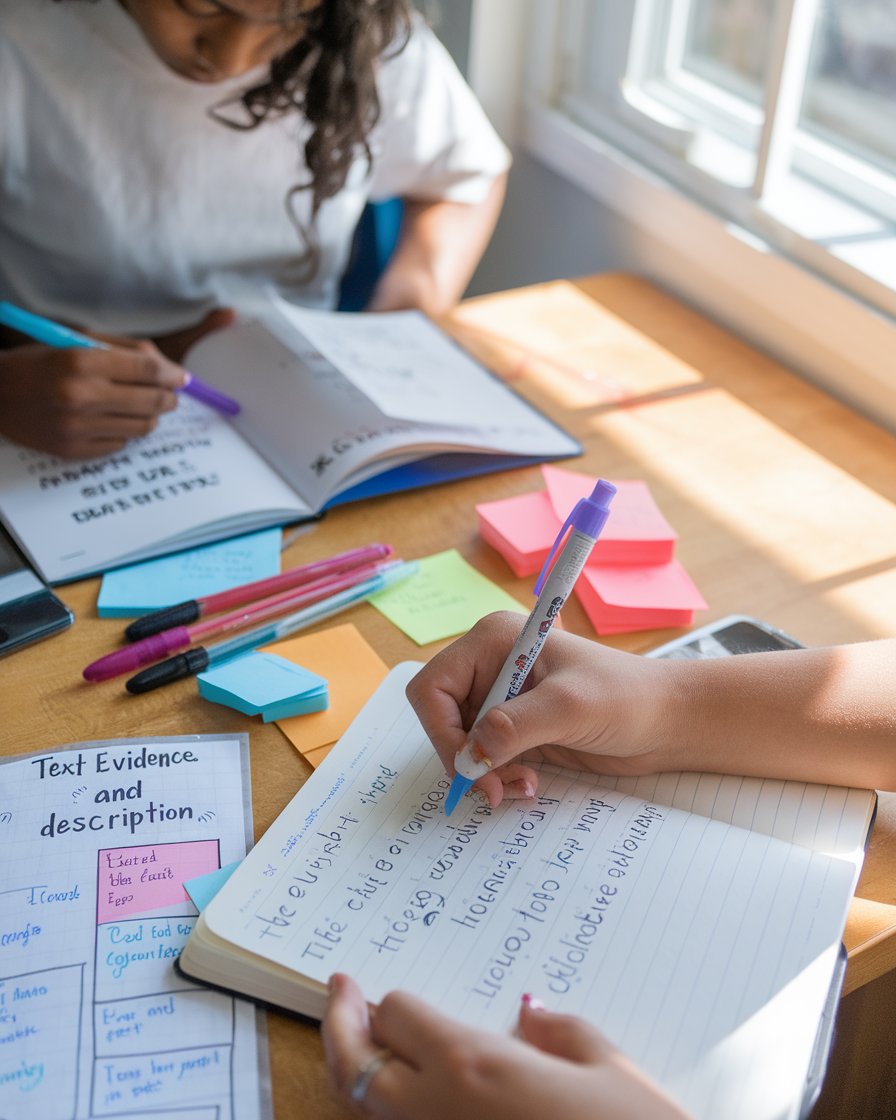- (Business Series)
- ASIN : B06X99RDBK
- Print length : 176 pages
Introduction
Elaboration in writing is a key skill that helps students add details and enhance the quality of their work. Whether it’s through the use of examples, descriptions, or text evidence, elaboration allows students to expand their thoughts and create more engaging content. Teachers can use various strategies for teaching elaboration, including the use of anchor charts, peer reviews, and sentence starters. By focusing on helping students to elaborate, they can better understand how to organize their ideas and make connections between different parts of their essays.
Students often struggle with elaboration, especially when faced with nonfiction or argumentative writing. To address this, educators need to provide writing resources, such as graphic organizers and mentor texts, that help students brainstorm and practice their elaboration skills. Understanding the different types of elaboration, such as adding textual evidence or using descriptive language, can guide students in improving their writing process. Through these strategies, students will be better equipped to produce clear and well-developed writing.
Key Takeaways
Teaching elaboration in writing helps students add more details and improve the clarity and engagement of their work.
Anchor charts and sentence starters are effective tools to teach students how to organize and expand their writing with more details.
Modeling the writing process allows students to see how professionals elaborate, providing them with real examples to follow.
Peer reviews and graphic organizers help students identify areas to elaborate on, making their writing stronger and more detailed.
Argumentative and informational writing benefit from using text evidence and descriptions to support claims and explain complex topics.
Mentor texts and detailed descriptions teach students how to use evidence and paint clearer pictures in their writing, leading to better overall results.
Effective Strategies to Teach Elaboration in Writing

When it comes to teaching elaboration in writing, using clear strategies is key. Elaboration helps students add details and make their writing more engaging. Teachers can introduce elaboration strategies during writing units to help students understand how to expand their sentences and paragraphs. This process involves focusing on adding more details, making connections, and using examples to support the main idea. By organizing thoughts and using charts or models, students can better grasp the writing process and learn to elaborate effectively. Whether it’s informational or creative writing, teaching these skills early on helps students write more clearly and confidently.
Practical Strategies for Teaching Elaboration in Writing
1. Use Anchor Charts for Visual Guidance
Anchor charts provide a visual reference for students, showing them key steps in the elaboration process. These charts often include sentence starters, examples of expanded sentences, and strategies for adding details to their writing. When students struggle with organizing their thoughts, anchor charts give them a clear path to follow, making the writing process less overwhelming.
2. Model Elaboration Using Mentor Texts
When teachers model the writing process by using mentor texts, students can see real examples of how to elaborate effectively. Whether it’s breaking down complex sentences or expanding on a main idea, mentor texts show students how to add descriptive details or use text evidence to strengthen their writing. By reviewing these examples, students understand how professionals elaborate, making it easier to apply similar techniques.
3. Encourage Peer Review and Feedback
Peer review allows students to provide feedback on each other’s writing, helping them identify areas where more elaboration is needed. When students review each other’s work, they can spot where details are lacking or where ideas need further expansion. This collaborative process helps students understand the importance of adding text evidence and using descriptive language to make their writing more complete.
4. Use Graphic Organizers to Plan Writing
Graphic organizers are another helpful tool for students to visually organize their thoughts before writing. These organizers help students map out their ideas and see where they can add more details or explanations. By using a clear structure, students can focus on elaborating at the right points in their essays, ensuring their writing is thorough and well-developed.
5. Introduce Sentence Starters for Better Elaboration
Sentence starters give students a solid foundation to build on when expanding their sentences. These starters help guide students toward adding more details to their writing, whether they’re working on informational or creative pieces. Regular use of sentence starters encourages students to think critically about how they can elaborate on their ideas, leading to stronger, more descriptive writing.
Using Anchor Charts to Teach Elaboration
Anchor charts are a great way to visually introduce students to elaboration strategies. These charts help students understand how to organize their writing and add more details effectively. By focusing on sentence starters, students can learn how to expand their paragraphs and improve their essays. Teachers can use these charts as a reference throughout the writing process, making it easier for students to remember key elaboration techniques. Whether it’s in small groups or independent practice, anchor charts are a valuable resource for helping students develop strong writing skills.
Modeling the Writing Process to Help Students Elaborate
One of the best ways to teach elaboration in writing is through modeling. By walking students through the process, teachers can show them how to add details and expand their thoughts. Using examples from mentor texts or personal writing helps students see how professionals elaborate in their work. This strategy gives students a clear understanding of how to take a simple idea and turn it into a well-developed paragraph. Teachers can also encourage peer modeling, where students learn from each other by reviewing and revising their work together.
Helping Students to Elaborate: Adding Details to Their Writing

Students often struggle with adding enough details to their writing. To teach elaboration, teachers can use anchor charts, examples, and peer revisions. Encouraging students to elaborate in their paragraphs helps build stronger essays and narratives. Teaching strategies like focusing on the main idea and supporting it with evidence makes it easier for students to identify where to add more details. This type of instruction not only improves writing but also helps students organize their thoughts more clearly. Peer reviews and modeling are great ways to get students more involved in the process, making them aware of the importance of elaboration in writing.
Case Study: Peer Review for Better Elaboration
At a middle school in California, teachers introduced peer review sessions to help students improve their elaboration skills. The process involved small groups reviewing each other’s writing, focusing on adding details and expanding main ideas. Teachers provided specific prompts to guide the reviews, making sure students knew where to add evidence or descriptions. After several weeks, students showed noticeable improvement in their ability to elaborate, creating stronger essays and narratives. This strategy not only helped students identify areas where they needed more clarity but also built critical thinking skills through collaborative feedback.
Peer Review as a Tool for Teaching Elaboration
Peer review is a powerful tool for helping students elaborate in their writing. By reviewing each other’s work, students learn to identify areas where more details or clarification are needed. Teachers can guide students through this process by providing specific questions or prompts to consider during the review. This strategy helps students develop a deeper understanding of how to improve their writing while also building critical thinking skills. Peer review sessions can be done in small groups or pairs, providing an interactive way for students to enhance their elaboration techniques.
Using Sentence Starters to Encourage Elaboration
Sentence starters are an effective way to get students to add more details to their writing. These prompts encourage students to elaborate by giving them a framework to begin their sentences. Teachers can provide sentence starters that focus on expanding a main idea, supporting a topic sentence, or adding descriptive details. This strategy helps students organize their thoughts and write more cohesively. Sentence starters can be especially helpful for students who struggle with knowing how to begin elaborating on their ideas. Regular practice with this tool can lead to stronger, more detailed writing.
Identifying and Modeling Elaboration Strategies for Different Types of Writing

Elaboration strategies vary depending on the type of writing students are working on. Whether it’s argumentative or informational writing, it’s important to teach students how to elaborate using different techniques. Teachers can model strategies like adding text evidence, expanding on a topic sentence, or using descriptive language. These approaches help students identify where they can improve and add details. By practicing in small groups or independently, students gain a better understanding of how to elaborate in writing, leading to stronger essays. Teachers should provide resources and time for students to practice these strategies regularly.
Strategies for Elaboration in Argumentative Writing
Elaboration in argumentative writing requires students to back up their claims with strong evidence. Teachers can guide students on how to use text evidence to support their arguments, as well as expand on their points with clear examples. Providing students with a graphic organizer can help them structure their thoughts and identify areas where elaboration is needed. Practicing these strategies helps students develop more persuasive essays. Argumentative writing is a critical skill in many academic settings, so focusing on elaboration techniques in this genre is important for student success.
Elaboration Techniques for Informational Writing
When it comes to informational writing, elaboration involves explaining ideas in detail and providing factual information. Teachers can model how to break down complex topics into smaller parts, making it easier for students to elaborate on their writing. Students can use these techniques to add more clarity and depth to their essays. Encouraging the use of mentor texts is a great way for students to see how professionals elaborate in informational writing. With regular practice, students will learn how to present information in a clear, detailed way.
“Writing improves in direct ratio to the number of things we can keep out of it.”
– William Zinsser (From On Writing Well)
Focusing on Text Evidence and Description to Encourage Students to Elaborate in Writing

One effective way to encourage students to elaborate is by focusing on text evidence and detailed descriptions. Teaching students how to use evidence to support their points helps them develop stronger essays. Additionally, using descriptive language in their writing allows them to paint clearer pictures for their readers. Teachers can focus on helping students identify areas where they can add details and improve the overall quality of their writing. Encouraging the use of color coding, graphic organizers, and sentence starters also makes the process of elaboration easier for students to follow. This helps them become more confident writers.
Using Mentor Texts to Teach Text Evidence and Description
Mentor texts are an excellent resource for teaching students how to use text evidence and description to elaborate in their writing. By studying how authors support their ideas and use descriptive language, students gain a better understanding of how to enhance their own work. Teachers can guide students through close reading exercises that highlight these techniques. This strategy helps students learn how to use textual evidence to support their arguments and add depth to their writing. Providing students with a variety of mentor texts helps them see elaboration in different writing styles and genres.
Encouraging the Use of Graphic Organizers for Elaboration
Graphic organizers are a valuable tool for helping students elaborate on their writing. These organizers allow students to visually map out their ideas and see where they can add more details. Teachers can introduce different types of organizers based on the writing task, such as webs, charts, or timelines. This strategy helps students focus on the key elements of their writing and ensure they provide enough supporting details. Graphic organizers are especially helpful for students who need extra guidance in organizing their thoughts and elaborating on their work.
Conclusion
In wrapping things up, teaching elaboration in writing is a must-have skill for students to really improve their writing. It’s not just about writing more but adding the right details to make their work clear and engaging. Using strategies like anchor charts, sentence starters, and even peer reviews, teachers can show students how to elaborate their ideas. These tools help students figure out how to organize their thoughts and really focus on adding those extra important details.
Plus, using mentor texts and graphic organizers gives students something they can easily follow. These help students who might be struggling with elaboration, especially when they’re doing nonfiction or argumentative writing. Teaching students to use things like text evidence or descriptive language helps them build stronger responses. When teachers focus on these simple but effective strategies, students start feeling more confident, and their writing gets much better.
